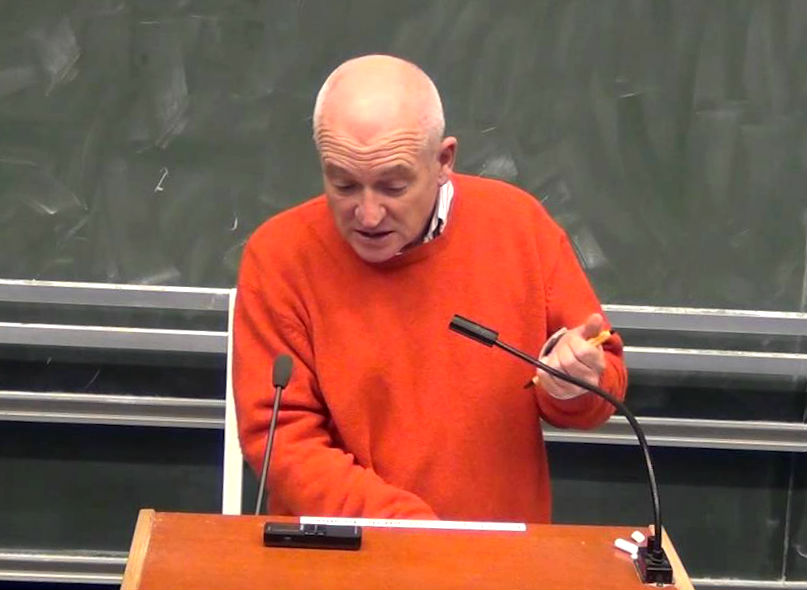
Robert Elsie
Studies in Modern Albanian Literature and Culture
New York: Columbia University Press, 1996. Pp. 188. US $28.00
Reviewed by Kristof Jacek Kozak
Studies in Modern Albanian Literature and Culture is the most recent book by the renowned Canadian Albanologist Robert Elsie who now lives in Germany. It is a compilation of his book reviews and two articles, all of which have been published in the past ten years, between summer 1985 and spring 1995. Most of the reviews were published in World Literature Today.
Aiming at a broader audience, Elsie opens and closes his Studies with two larger and very informative articles: the first, “Evolution and Revolution in Modern Albanian Literature” (1991), is a short but comprehensive introduction to Albanian literature; the second, “The Last Albanian Waiter; Impressions from a Journey to Kosovo” (1992), depicts the fate of Albanians in today’s Kosovo under Serbian hegemony.
Nevertheless, the core of the book consists of fifty-eight book reviews which efficiently cover publications by Albanian authors in Albania (twenty) and abroad, in Kosovo (sixteen) and the West (twenty-six), whether in original or in translations. Elsie often points to the fact that there are numerous regions in which Albanians live today without recognized rights as minorities: in the current Yugoslavia (Montenegro and Kosovo), in the former Yugoslav republic of Macedonia, and in Greece, not to mention very small communities in southern Italy (the Arbëresh) and in northern Dalmatia (the Arbanas).
Elsie’s Studies in Modern Albanian Literature and Culture can be read in at least two ways. One receives the impression that Elsie wants to introduce readers less aware of recent Albanian history and literature to the cruel complexity of public and literary life in the communist post-war Albania. His book may be read as a troubling and gruesome narrative about the last fifty years of Albanian history. Albania, having been the embodiment of pure Stalinism for decades, was made, by the ruling communist Party and its leader Enver Hoxha, into a huge internment and labor camp, where the most severely punished crime has remained independent thinking. Elsie successfully presents every single work in a cultural-political frame, as a “social fact” well woven into the context.

Because of Elsie’s focus the reviews are rather short, more of an informative character rather than a thorough literary analysis of the works themselves. We may simply see the Studies as a review of published works, a compte rendu or Bekanntmachung about literary production with an attempt to present a broader picture. This aspect of Elsie’s objective renders a deeper literary analysis of secondary importance. Nevertheless, the volume is supplemented by a bibliography for anyone who becomes more interested in the topic and wishes to pursue it more extensively.
The overview Elsie presents of Albanian literature is of one whose autonomy has been undermined to the extent that it actually ceased to function as literature and was transformed into political tracts and propaganda of the poorest quality. Elsie describes the state of Albanian literature as a “collective trauma” of the Albanian nation. Albania is now witness to an intense process of discovering its own cultural and literary roots. Many authors’ works are reappearing after having been left in oblivion for fifty years. The most notable example is perhaps Albania’s national poet, Gjergj Fishta, who, being a Franciscan monk, was declared a “clerical and fascist poet” and literally swept out of history. But not, as Elsie confirms, from the memory of the people.
Under such an inconceivable political terror one can understand that the only “art” practiced in Albania was that of survival. It was almost a rule that every intellectual would have been sent to a prison or an internment camp. Some, like Lazër Radi, for example, spent forty-six years in internment. Many of them-Elsie enumerates only a few-died there. Nevertheless there were exceptions. The most prominent one is Ismail Kadare, hailed as a literary “prince of the nation.” There are also others, like Dritëro Agolli, who was the Head of the Albanian Union of Writers from 1973 to 1990, or Neshat Tozaj, who was an employee of the Ministry of the Interior.
At the end of Elsie’s survey we are able, regardless of the perspective we adopt, to successfully put together piece by piece the whole picture of the last decade in Albania which, despite the hopes raised after the fall of the Regime, has remained desolate and desperate. We have to state, unfortunately, that the suffering and tragedy of the Albanian people is far from coming to an end. The summer of 1997 bore witness to this bitter truth; an armed rebellion in the south of Albania led to a mass exodus of people destined for exile.
Elsie’s book perfectly attains the goal of being a broad and knowledgeable introduction to the recent traumatic literary and cultural history of Albania and its people